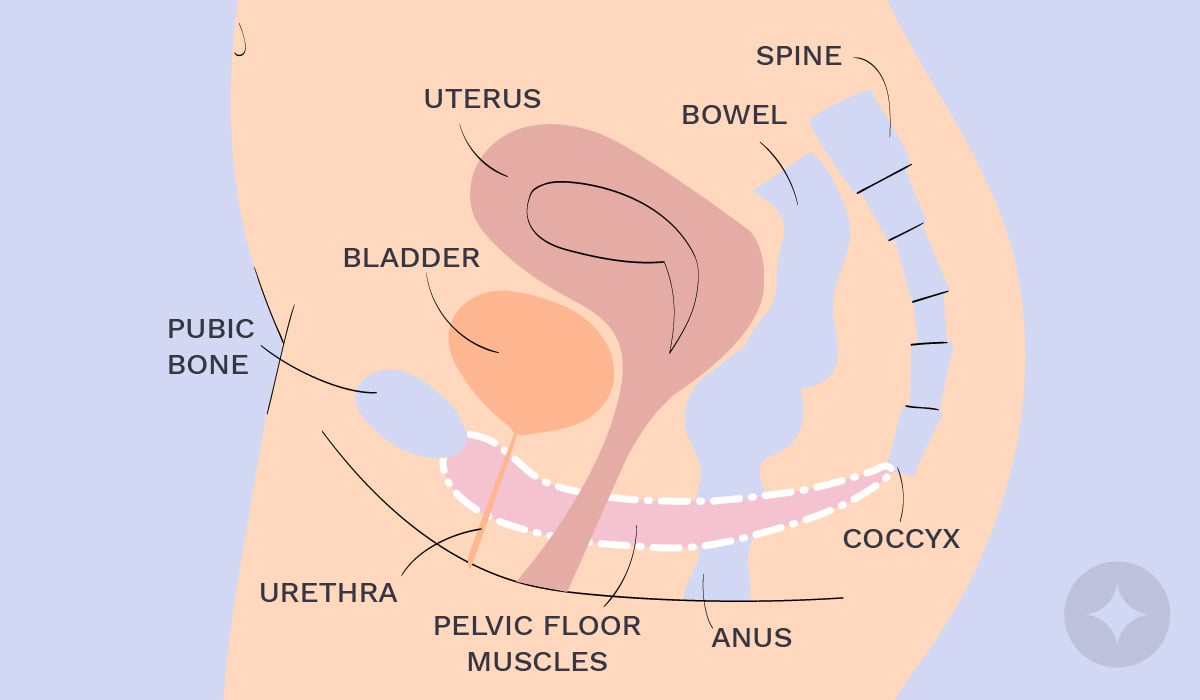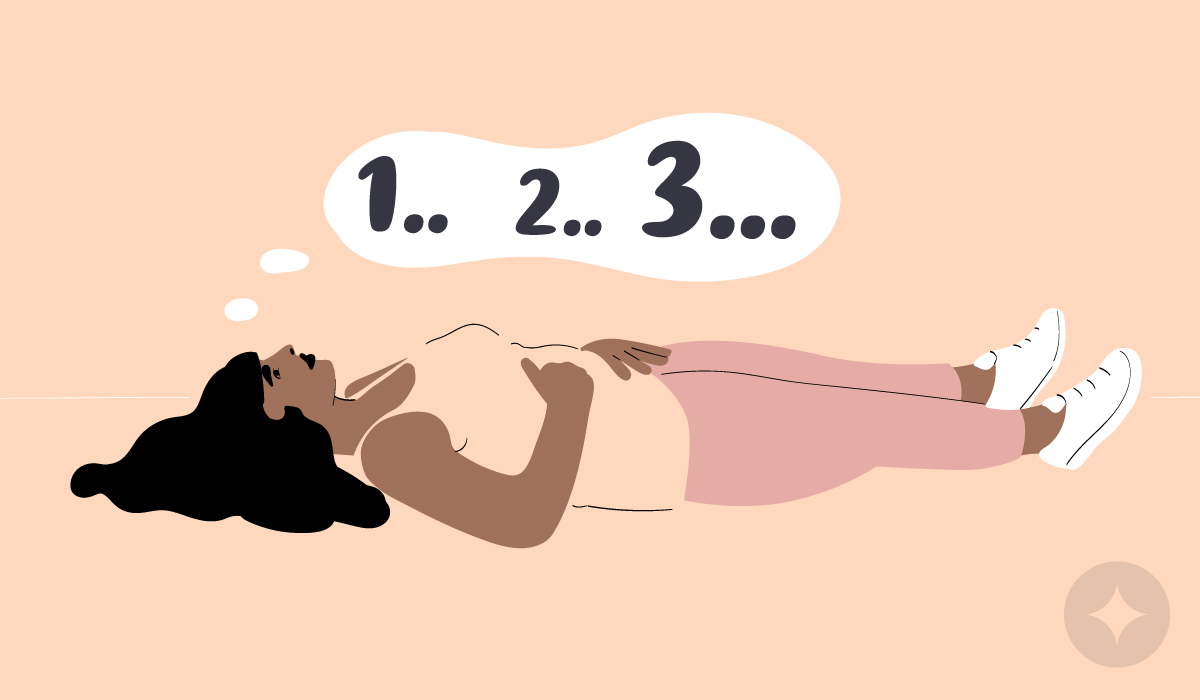No need to hang tight any longer (pun intended!): Here’s everything that you need to know about Kegel exercises.
What Are Kegel Exercises?
Kegel exercises are the most widely practiced type of pelvic floor exercises that help with a myriad of symptoms (but more on that later!).
Who Invented Kegel Exercises?
In 1948, American Gynecologist Dr. Arnold Kegel designed the first program of strength activities for the pelvic floor muscles. Named after Dr. Arnold himself, Kegel exercises involve repetitions of both prolonged or rapid voluntary contractions of these muscles – also known as clench and release.
What Are the Benefits of Kegel Exercises?
Dr. Arnold’s program was created to help with urinary incontinence (UI) in women. Strengthening the pelvic floor muscles helps to improve the function of the urinary and rectal sphincter.

Kegels tone the entire hammock-shaped muscle infrastructure that holds your pelvic organs in place and ensures their adequate functioning. However, Kegel exercises bring many other benefits besides helping with and preventing UI.
Kegel Exercises Improve Sex
By allowing you to get acquainted with your pleasure center, Kegels intensify your orgasms and sensations. Improving the tone of your pelvic floor muscles also increases how much of the vagina gets stimulated during penetration.
Practicing Kegels have also been shown to help experience the elusive female ejaculation a.k.a. squirting.
What Causes Pelvic Floor Dysfunction?
The main factors that impact the health of the pelvic floor and lead to dysfunctions are:
– Pregnancy and childbirth
– Excessive impact sports i.e. running, jumping, etc.
– Chronic cough
– Chronic constipation
– Age
– Excessive weight
– Genetic predispositions to connective tissue weakness
Now, this isn’t to say that you shouldn’t go running! It’s just important to get acquainted with these factors so that we can take preventive actions. A little bit of running, a little bit of kegeling ?
How to Get Started with Kegel Exercises
Before we begin, let’s keep the following 3 things in mind:
1. If you’re experiencing symptoms such as discomfort during sex or urine leakage, check with a pelvic floor physical therapist before you start squeezing! The therapist will evaluate and provide recommendations on how you should exercise your pelvic floor.
2. Be very mindful of your breath during your Kegel session. It’s easy to hold our breaths without noticing while concentrating on what’s going on down there.
3. Make sure you are contracting the right muscles. Pay special attention and check that you are not contracting your lower abdomen or your glutes.
Now, let’s get our Kegel on and practice some exercises!
Kegel Exercises for Beginners
Lay down on a yoga mat and take a few deep breaths. Make sure that your back isn’t arched and is well supported.
Place one hand on your lower belly and the other over your vulva. Doing so will help you identify if you are doing your exercises correctly.
Now, exhale all the air, and as you inhale, think as if you are stopping your pee and contract your pelvic floor muscles.

Count 3, 2, 1. Then release and breathe out.
Repeat this 10 times and notice if you can feel an increased sensitivity in the pelvic and vulvar area.
The Seated Kegel a.k.a Train Kegel
This type of Kegel exercise is discreet yet effective. Seated Kegels are perfect for people that have to sit at the office for long hours or during a boring commute. Nobody will know, and you are making yourself more productive ?
First of all, sit upright with your back supported on your seat. Make sure your hips and knees are aligned and become aware of your pelvic floor.

Next, imagine that you want to close the vagina or stop your pee – that’s what a Kegel feels like. This exercise will cause the pelvic floor muscles to contract.
Contract slowly and count 5, 4, 3, 2, 1.
Now release and relax for 5, 4, 3, 2, 1.
Repeat this 10 times. Be mindful of your breath. If contracting for 5 seconds initially feels like a bit of a stretch, feel free to bring it down to 3 seconds, ad work your way up to 5 with time and practice. (And please, don’t count out loud as it might confuse people lol!).
Observe and feel what happens to your pelvic area during the contraction and relaxation. The most important part is to gain the proprioception of these internal muscles.
Kegel Exercises with Toys
While Kegel exercises are incredibly beneficial to work on your pelvic floor’s voluntary muscle fibers consciously, toys can help activate involuntary fibers. Involuntary fibers are those that go into action without us giving them orders to do so, such as when we cough or sneeze – thank goodness they intervene, am I right?
Do Kegel Toys Work?
There’s been a lot of conversation around the prolonged use of Kegel balls and Jade eggs. These examples include articles recommending women just to run errands or walk around with a device inside.
It’s important to keep in mind that the vagina is not meant to be carrying extra weight inside while walking around or running. Relaxation, flexibility, and lengthening are needed when we move.
Seriously. The woman that used to walk around town with her yoni in for 10 hours and then had the most intense orgasm ever is a myth. Let’s focus on what’s healthy for you!
Benefits of Using Kegel Toys
In the initial learning phases, it helps to use devices to practice kegeling.
Kegel toys can help you gain proprioception, learning to identify the spectrum from total pelvic floor relaxation to your maximum contraction. They offer additional support when exercising your pelvic muscles, and they come in 3 different levels that vary in size, shape, and weight.
Ben wa balls allow you to choose what’s best for you depending on baseline strength level and what feels comfortable.
The secret with kegel toys is not to wear them for too long. A 15-minute session here and there can be very beneficial… and kind of hot!
With Kegel exercises, it’s all about finding the right balance for yourself, and to turn it into a fun element of your self-care routine.
Kegel Exercises: An Expert’s Guide to Kegel Do’s and Don’ts originally appeared on Rumble & Buzz

